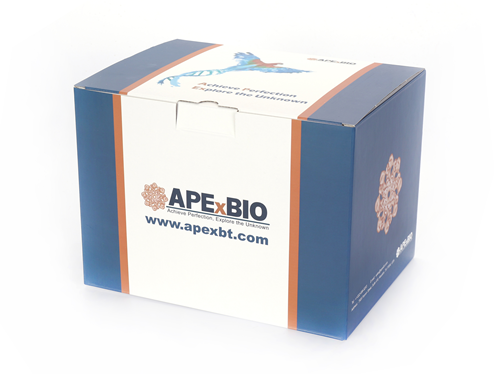Recombinant Mouse IL-17A, Tag Free
Interleukin-17A(IL-17A) , also known as CTLA-8, is a 15-20 kDa glycosylated cytokine that plays an important role in anti-microbial and chronic inflammation. The six IL-17 cytokines (IL-17A-F) are encoded by separate genes but adopt a conserved cystine knot fold [1, 2]. Mature mouse IL-17A shares 61% and 89% amino acid sequence identity with human and rat IL-17A, respectively [3, 4]. IL-17A is secreted by Th17 cells, gamma /δ T cells, iNKT cells, NK cells, LTi cells, neutrophils, and intestinal Paneth cells [2]. It forms disulfide-linked homodimers as well as disulfide-linked heterodimers with IL-17F[5, 6]. IL-17A exerts its effects through the transmembrane IL-17RA in complex with IL-17RC or IL-17RD [7, 8]. Both IL-17RA and IL-17RC are required for responsiveness to heterodimeric IL-17A/F [7]. IL-17A promotes protective mucosal and epidermal inflammation in response to microbial infection [9-12]. IL-17A/F likewise induces neutrophil migration, but IL-17F does not [11]. IL-17A additionally enhances the production of inflammatory mediators by rheumatoid synovial fibroblasts and contributes to TNF-alpha induced shock [13, 14]. In contrast, it can protect against the progression of colitis by limiting chronic inflammation [12]. IL-17A encourages the formation of autoreactive germinal centers and exacerbates the onset and progression of experimental models of autoimmunity [15,16]. IL-17A has been shown to exert either tumorigenic or anti-tumor effects [17, 18].
Reference
[1]. Gaffen, S.L. (2009) Nat. Rev. Immunol. 9:556.
[2]. Cua, D.J. and C.M. Tato (2010) Nat. Rev. Immunol. 10:479.
[3]. Yao, Z. et al. (1996) Gene 168:223.
[4]. Rouvier, E. et al. (1993) J. Immunol. 150:5445.
[5]. Chang, S.H. and C. Dong (2007) Cell Res. 17:435.
[6]. Wright, J.F. et al. (2007) J. Biol. Chem. 282:13447.
[7]. Wright, J.F. et al. (2008) J. Immunol. 181:2799.
[8]. Rong, Z. et al. (2009) Cell Res. 19:208.
[9]. Cho, J.S. et al. (2010) J. Clin. Invest. 120:1762
[10]. Liang, S.C. et al. (2006) J. Exp. Med. 203:2271.
[11]. Liang, S.C. et al. (2007) J. Immunol. 179:7791.
[12]. O’Connor Jr., W. et al. (2009) Nat. Immunol. 10:603.
[13]. Fossiez, F. et al. (1996) J. Exp. Med. 183:2593.
[14]. Takahashi, N. et al. (2008) J. Exp. Med. 205:1755.
[15]. Hsu, H. et al. (2008) Nat. Immunol. 9:166.
[16]. Rohn, T.A. et al. (2006) Eur. J. Immunol. 36:2857.
[17]. Wang, L. et al. (2009) J. Exp. Med. 206:1457.
[18]. Kryczek, I. et al. (2009) Blood 114:357
|
Accession # |
Q62386 |
|
Alternate Names |
IL17; IL-17; IL17A; IL-17A; CTLA8; CTLA-8; Cytotoxic T-lymphocyte-associated antigen 8 |
|
Source |
Human embryonic kidney cell, HEK293-derived mouse IL-17/IL-17A protein |
|
Protein sequence |
Ala26-Ala158 |
|
M.Wt |
15.0 kDa |
|
Appearance |
Solution protein |
|
Stability & Storage |
Use a manual defrost freezer and avoid repeated freeze-thaw cycles. 3 years from date of receipt, -20 to -7°C as supplied. |
|
Concentration |
0. 2 mg/mL |
|
Formulation |
Dissolved in sterile PBS buffer. |
|
Reconstitution |
We recommend that this vial be briefly centrifuged prior to opening to bring the contents to the bottom. This solution can be diluted into other aqueous buffers. |
|
Biological Activity |
The EC50 for this effect is 0.12-1.25 ng/mL. Measured by its ability to induce IL-6 secretion by NIH-3T3 mouse embryonic fibroblast cells. |
|
Shipping Condition |
Shipping with dry ice. |
|
Handling |
Centrifuge the vial prior to opening. |
|
Usage |
For Research Use Only! Not to be used in humans. |
Quality Control & DataSheet
- View current batch:
-
Purity > 95%, determined by SDS-PAGE.
- Datasheet
Endotoxin: <0.010 EU per 1 ug of the protein by the LAL method.








